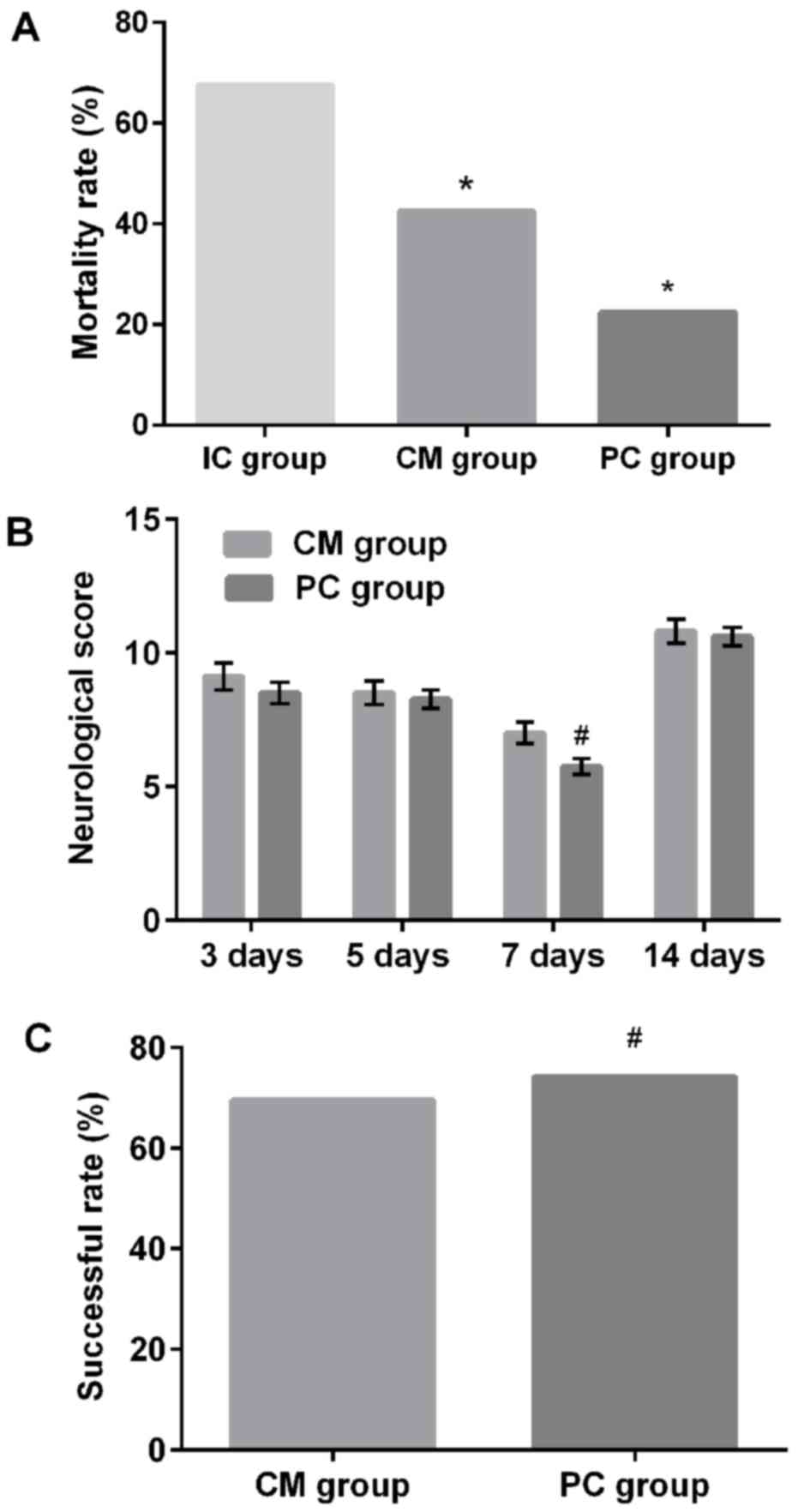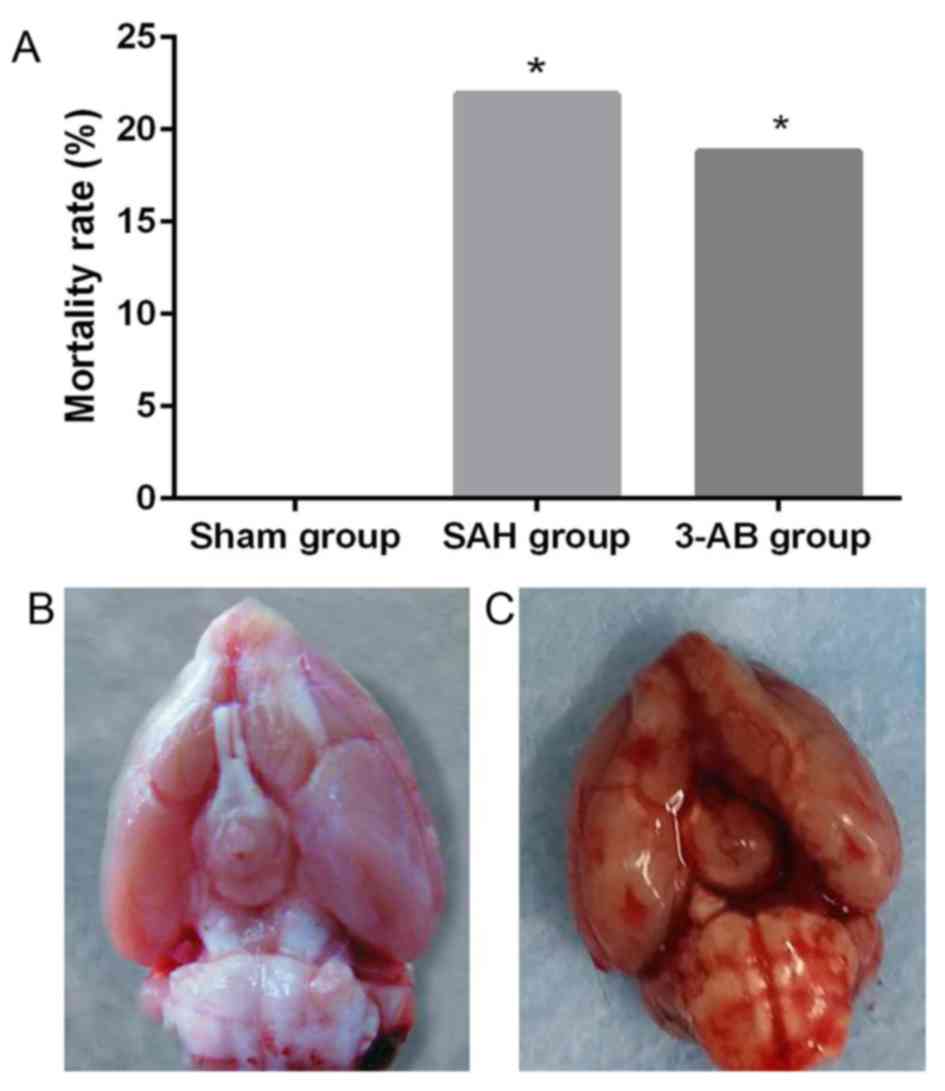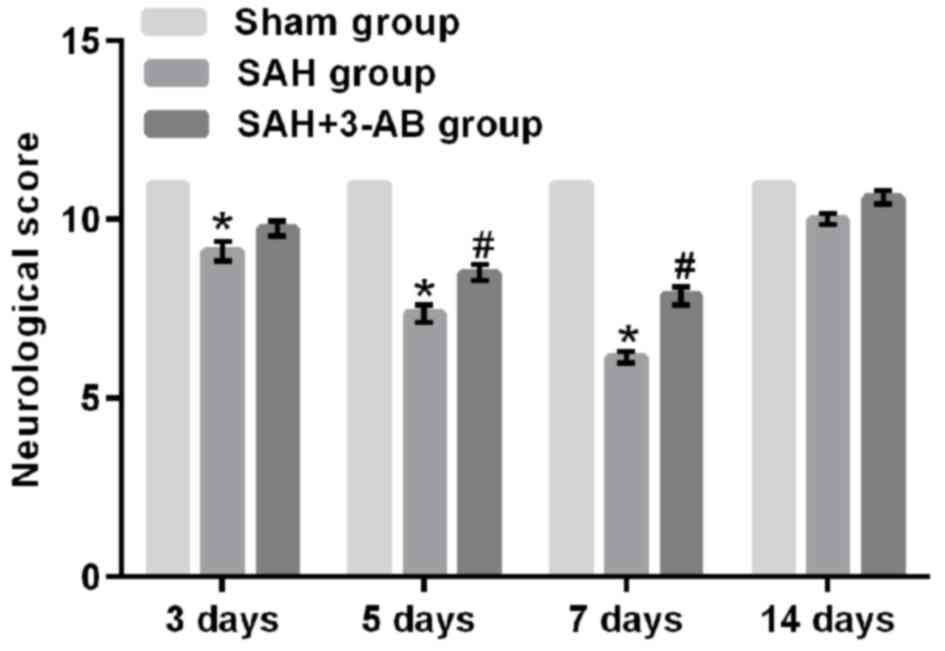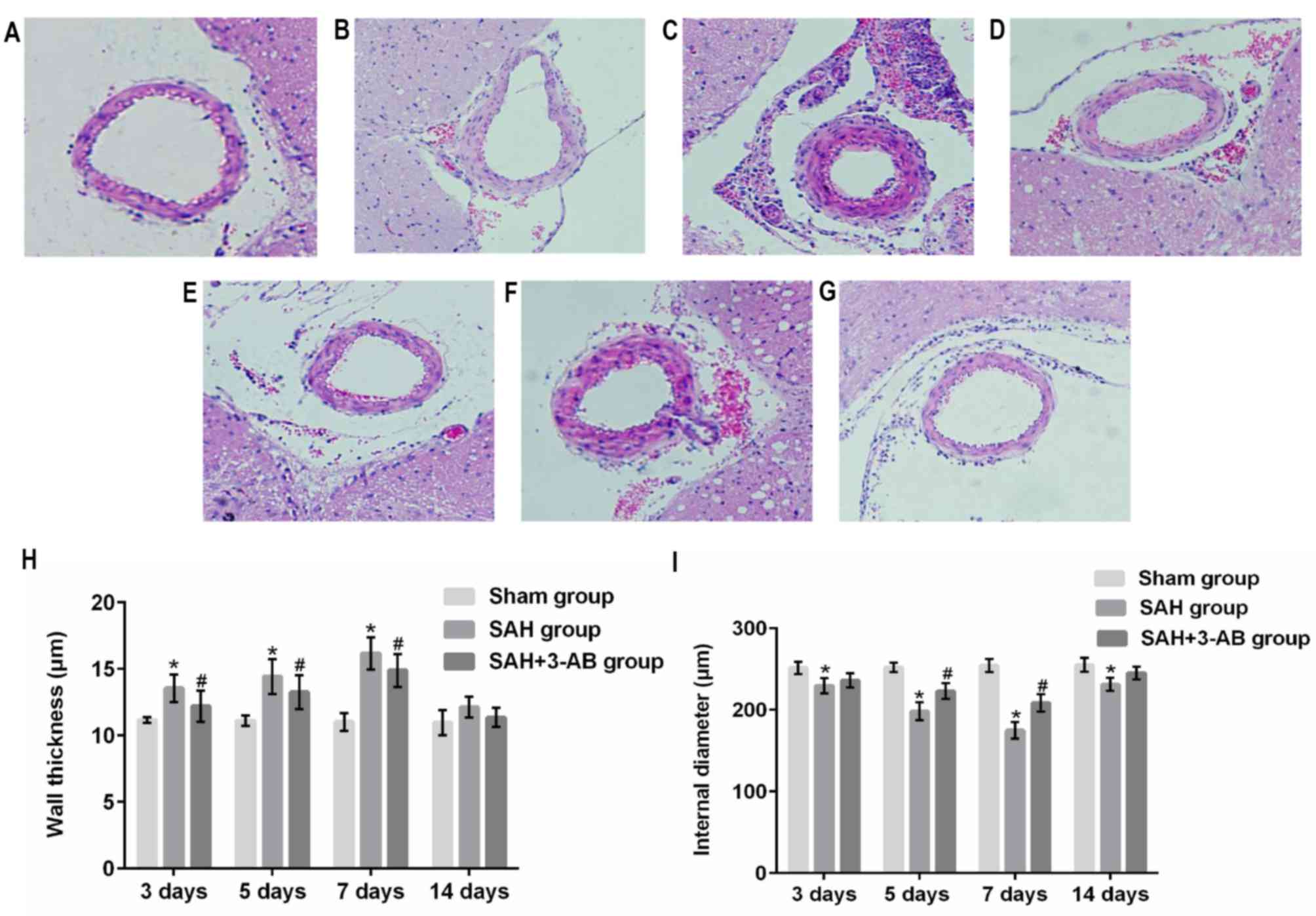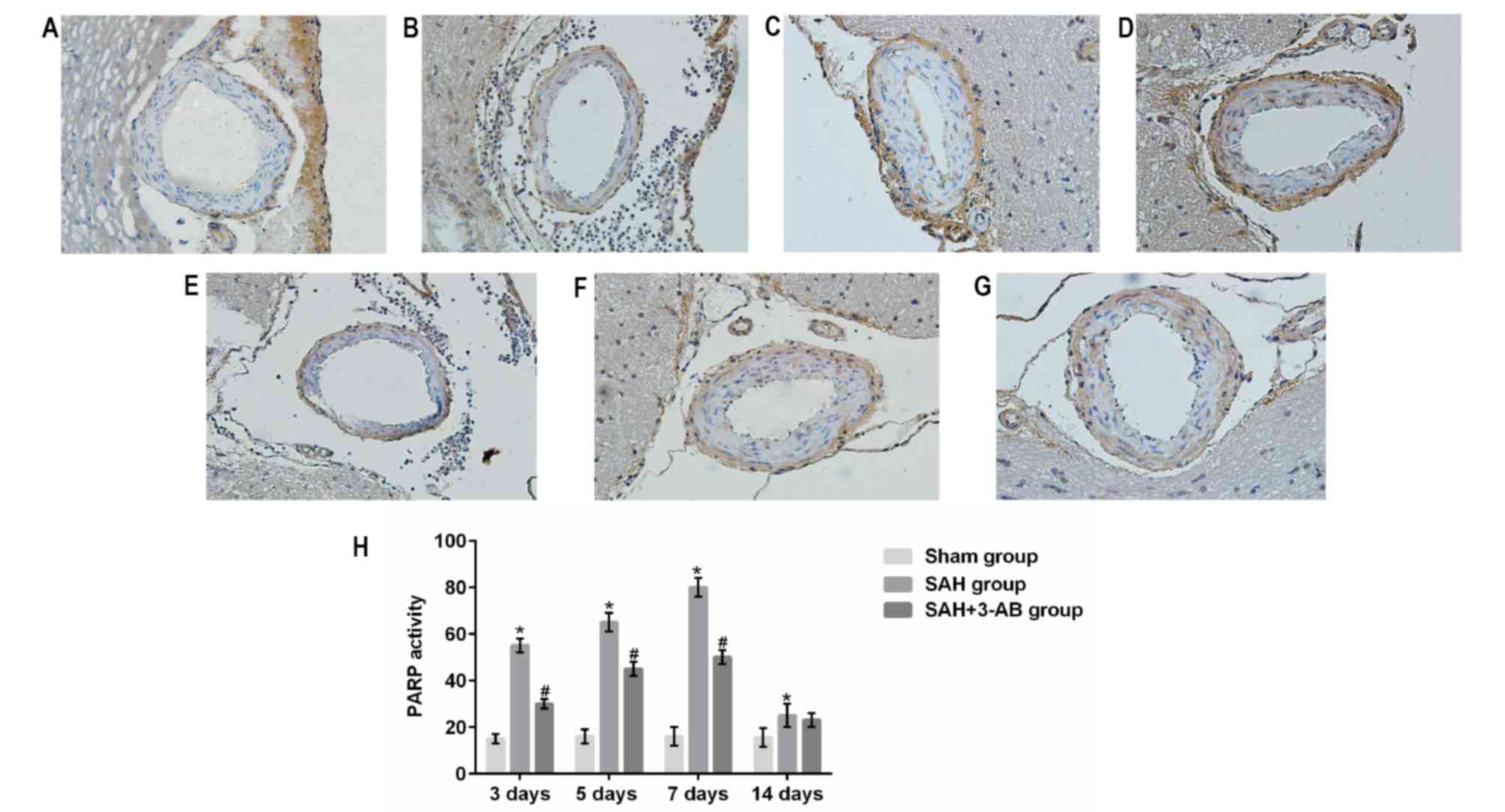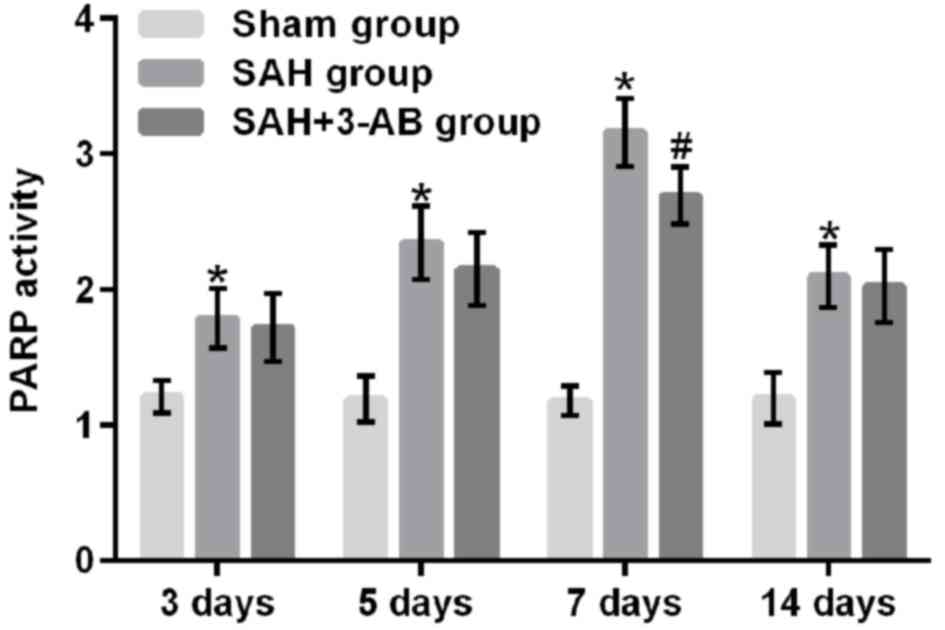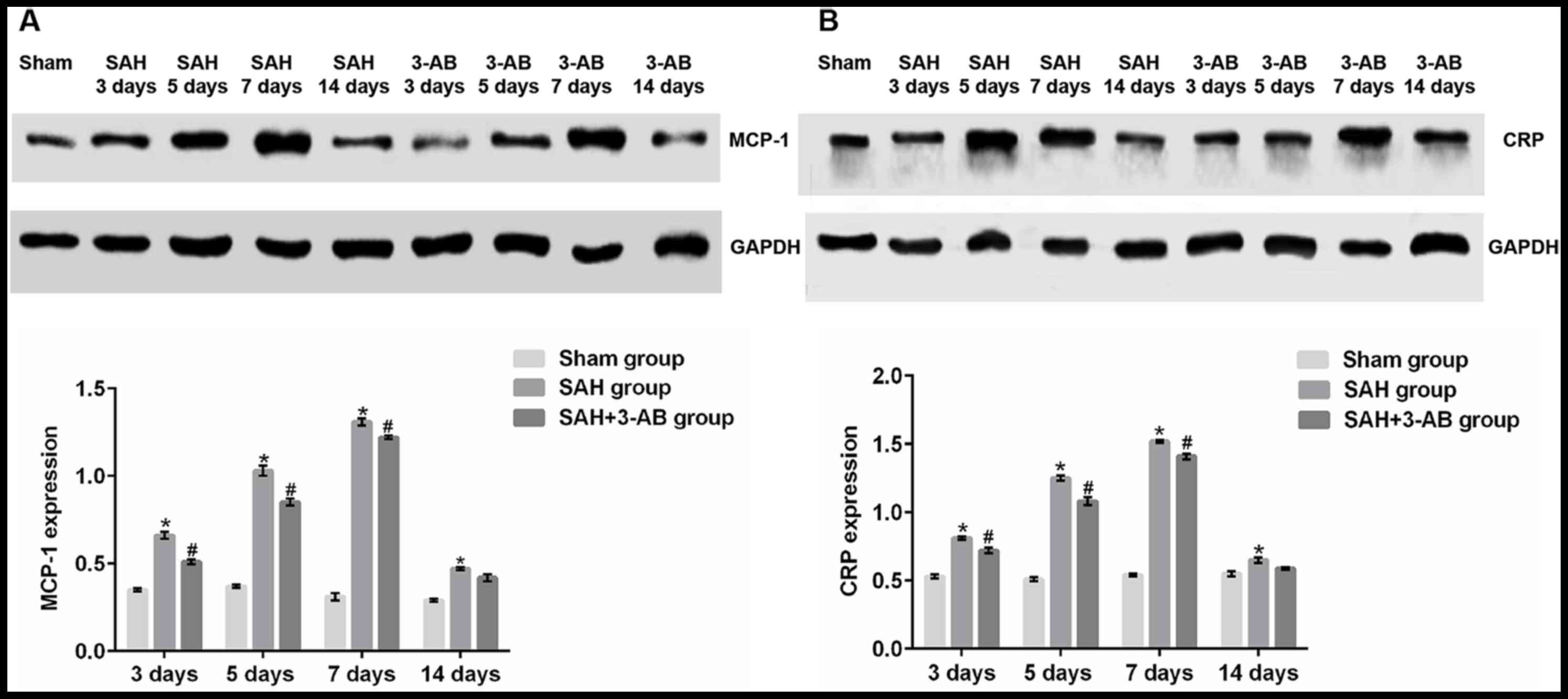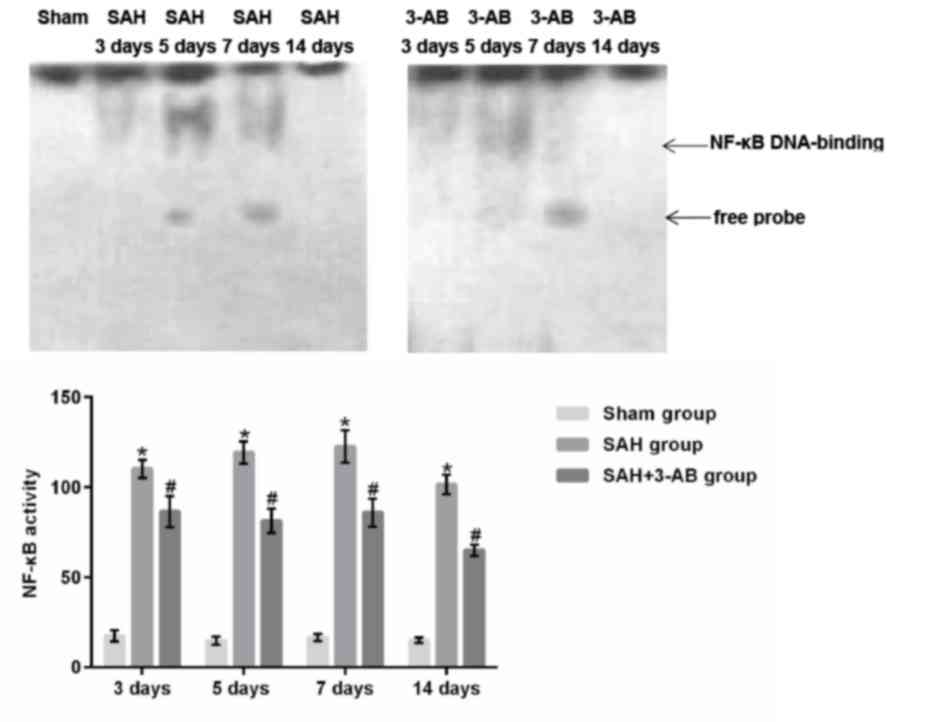|
1
|
Treggiarivenzi MM, Suter PM and Romand JA:
Review of medical prevention of vasospasm after aneurysmal
subarachnoid hemorrhage: A problem of neurointensive care.
Neurosurgery. 48:249–262. 2001. View Article : Google Scholar : PubMed/NCBI
|
|
2
|
Woo D and Broderick JP: Spontaneous
intracerebral hemorrhage: Epidemiology and clinical presentation.
Neurosurg Clin N Am. 13:265–279.v. 2002. View Article : Google Scholar : PubMed/NCBI
|
|
3
|
Gules I, Satoh M, Clower BR, Nanda A and
Zhang JH: Comparison of three rat models of cerebral vasospasm. Am
J Physiol Heart Circ Physiol. 283:H2551–H2559. 2002. View Article : Google Scholar : PubMed/NCBI
|
|
4
|
Cecon AD, Figueiredo EG, Bor-seng-shu E,
Scaff M and Teixeira MJ: Extremely delayed cerebral vasospasm after
subarachnoid hemorrhage. Arq Neuropsiquiatr. 66:554–556. 2008.
View Article : Google Scholar : PubMed/NCBI
|
|
5
|
Wu Q, Zheng R, Wang J, Wang J and Li S: CT
perfusion imaging of cerebral microcirculatory changes following
subarachnoid hemorrhage in rabbits: Specific role of endothelin-1
receptor antagonist. Brain Res. Sep 20–2018.(Epub ahead of print).
View Article : Google Scholar
|
|
6
|
Yatsushige H, Yamaguchi M, Zhou C, Calvert
JW and Zhang JH: Role of c-Jun N-terminal kinase in cerebral
vasospasm after experimental subarachnoid hemorrhage. Stroke.
36:1538–1543. 2005. View Article : Google Scholar : PubMed/NCBI
|
|
7
|
Handa Y and Kubota T, Kaneko M, Tsuchida
A, Kobayashi H, Kawano H and Kubota T: Expression of intercellular
adhesion molecule 1 (ICAM-1) on the cerebral artery following
subarachnoid haemorrhage in rats. Acta Neurochir (Wien). 132:92–97.
1995. View Article : Google Scholar : PubMed/NCBI
|
|
8
|
Zhang J, Xu X, Zhou D, Li H, You W, Wang Z
and Chen G: Possible role of Raf-1 kinase in the development of
cerebral vasospasm and early brain injury after experimental
subarachnoid hemorrhage in rats. Mol Neurobiol. 52:1527–1539. 2015.
View Article : Google Scholar : PubMed/NCBI
|
|
9
|
Zhou ML, Shi JX, Hang CH, Cheng HL, Qi XP,
Mao L, Chen KF and Yin HX: Potential contribution of nuclear
factor-kappaB to cerebral vasospasm after experimental subarachnoid
hemorrhage in rabbits. J Cereb Blood Flow Metab. 27:1583–1592.
2007. View Article : Google Scholar : PubMed/NCBI
|
|
10
|
Pacher L and Szabó C: Role of
Poly(ADP-Ribose) polymerase-1 activation in the pathogenesis of
diabetic complications: Endothelial dysfunction, as a common
underlying theme. Antioxid Redox Signal. 7:1568–1580. 2005.
View Article : Google Scholar : PubMed/NCBI
|
|
11
|
Pacher P, Mabley JG, Soriano FG, Liaudet L
and Szabó C: Activation of poly(ADP-ribose) polymerase contributes
to the endothelial dysfunction associated with hypertension and
aging. Int J Mol Med. 9:659–664. 2002.PubMed/NCBI
|
|
12
|
Hassa PO, Buerki C, Lombardi C, Imhof R
and Hottiger MO: Transcriptional coactivation of nuclear
factor-kappaB-dependent gene expression by p300 is regulated by
Poly(ADP)-ribose polymerase-1. J Biol Chem. 278:45145–45153. 2003.
View Article : Google Scholar : PubMed/NCBI
|
|
13
|
Saravanan S, Islam VI, Babu NP, Pandikumar
P, Thirugnanasambantham K, Chellappandian M, Raj CS, Paulraj MG and
Ignacimuthu S: Swertiamarin attenuates inflammation mediators via
modulating NF-κB/I κB and JAK2/STAT3 transcription factors in
adjuvant induced arthritis. Eur J Pharm Sci. 56:70–86. 2014.
View Article : Google Scholar : PubMed/NCBI
|
|
14
|
Kaoutzanis M, Yokota M, Sibilia R and
Peterson JW: Neurologic evaluation in a canine model of single and
double subarachnoid hemorrhage. J Neurosci Methods. 50:301–307.
1993. View Article : Google Scholar : PubMed/NCBI
|
|
15
|
Xiong Y, Wang XM, Zhong M, Li ZQ, Wang Z,
Tian ZF, Zheng K and Tan XX: Alterations of caveolin-1 expression
in a mouse model of delayed cerebral vasospasm following
subarachnoid hemorrhage. Exp Ther Med. 12:1993–2002. 2016.
View Article : Google Scholar : PubMed/NCBI
|
|
16
|
Shao A, Guo S, Tu S, Ammar AB, Tang J,
Hong Y, Wu H and Zhang J: Astragaloside IV alleviates early brain
injury following experimental subarachnoid hemorrhage in rats. Int
J Med Sci. 11:1073–1081. 2014. View Article : Google Scholar : PubMed/NCBI
|
|
17
|
Grasso G: An overview of new
pharmacological treatments for cerebrovascular dysfunction after
experimental subarachnoid hemorrhage. Brain Res Brain Res Rev.
44:49–63. 2004. View Article : Google Scholar : PubMed/NCBI
|
|
18
|
Specogna AV: Subarachnoid hemorrhage
diagnosis. JAMA. 311:2012014. View Article : Google Scholar : PubMed/NCBI
|
|
19
|
Sousa FG, Matuo R, Soares DG, Escargueil
AE, Henriques JA, Larsen AK and Saffi J: PARPs and the DNA damage
response. Carcinogenesis. 33:1433–1440. 2012. View Article : Google Scholar : PubMed/NCBI
|
|
20
|
Chai WN, Sun XC, Lv FJ, Wan B and Jiang L:
Clinical study of changes of cerebral microcirculation in cerebral
vasospasm after SAH. Acta Neurochir Suppl. 110:225–228.
2011.PubMed/NCBI
|
|
21
|
Mutch WA: New concepts regarding cerebral
vasospasm: Glial-centric mechanisms. Can J Anaesth. 57:479–489.
2010. View Article : Google Scholar : PubMed/NCBI
|
|
22
|
Yan JH, Yang XM, Chen CH, Hu Q, Zhao J,
Shi XZ, Luan LJ, Yang L, Qin LH and Zhou CM: Pifithrin-alpha
reduces cerebral vasospasm by attenuating apoptosis of endothelial
cells in a subarachnoid haemorrhage model of rat. Chin Med J
(Engl). 121:414–419. 2008.PubMed/NCBI
|
|
23
|
Pluta RM: Introduction to problems of
postsubarachnoid hemorrhage delayed cerebral vasospasm. Animal
Models of Acute Neurological Injuries II. 459–464. 2012. View Article : Google Scholar
|
|
24
|
Lin C, Zhao Y, Wan G, Zhu A and Wang H:
Effects of simvastatin and taurine on delayed cerebral vasospasm
following subarachnoid hemorrhage in rabbits. Exp Ther Med.
11:1355–1360. 2016. View Article : Google Scholar : PubMed/NCBI
|
|
25
|
Zaheer A, Sahu SK, Wu Y, Zaheer A, Haas J,
Lee K and Yang B: Diminished cytokine and chemokine expression in
the central nervous system of GMF-deficient mice with experimental
autoimmune encephalomyelitis. Brain Res. 1144:239–247. 2007.
View Article : Google Scholar : PubMed/NCBI
|
|
26
|
Thompson WL, Karpus WJ and Van Eldik LJ:
MCP-1-deficient mice show reduced neuroinflammatory responses and
increased peripheral inflammatory responses to peripheral endotoxin
insult. J Neuroinflammation. 5:352008. View Article : Google Scholar : PubMed/NCBI
|
|
27
|
Lu H, Shi JX, Chen HL, Hang CH, Wang HD
and Yin HX: Expression of monocyte chemoattractant protein-1 in the
cerebral artery after experimental subarachnoid hemorrhage. Brain
Res. 1262:73–80. 2009. View Article : Google Scholar : PubMed/NCBI
|
|
28
|
Buckley DI, Fu R, Freeman M, Rogers K and
Helfand M: C-reactive protein as a risk factor for coronary heart
disease: A systematic review and meta-analyses for the U.S.
preventive services task force. Ann Intern Med. 151:483–495. 2009.
View Article : Google Scholar : PubMed/NCBI
|
|
29
|
Elkind MS, Luna JM, Moon YP, Liu KM,
Spitalnik SL, Paik MC and Sacco RL: High-sensitivity C-reactive
protein predicts mortality but not stroke the northern manhattan
study. Neurology. 73:1300–1307. 2009. View Article : Google Scholar : PubMed/NCBI
|
|
30
|
Nordestgaard BG and Zacho J: Lipids,
atherosclerosis and CVD risk: Is CRP an innocent bystander? Nutr
Metab Cardiovasc Dis. 19:521–524. 2009. View Article : Google Scholar : PubMed/NCBI
|
|
31
|
Adachi K, Miyajima SI, Nakamura N, Miyabe
M, Kobayashi Y, Nishikawa T, Suzuki Y, Kikuchi T, Kobayashi S,
Saiki T, et al: Role of Poly(ADP-ribose) polymerase activation in
the pathogenesis of periodontitis in diabetes. J Clin Periodontol.
44:971–980. 2017. View Article : Google Scholar : PubMed/NCBI
|
|
32
|
Mukhopadhyay P, Horváth B, Kechrid M,
Tanchian G, Rajesh M, Naura AS, Boulares AH and Pacher P:
Poly(ADP-ribose)polymerase-1 is a key mediator of cisplatin-induced
kidney inflammation and injury. Free Radic Biol Med. 51:1774–1788.
2011. View Article : Google Scholar : PubMed/NCBI
|
|
33
|
Cardinale A, Paldino E, Giampà C, Bernardi
G and Fusco FR: PARP-1 inhibition is neuroprotective in the R6/2
mouse model of Huntington's disease. PLoS One. 10:e1344822015.
View Article : Google Scholar
|
|
34
|
Sun M, Zhao Y, Gu Y and Xu C:
Anti-inflammatory mechanism of taurine against ischemic stroke is
related to down-regulation of PARP and NF-κB. Amino Acids.
42:1735–1747. 2012. View Article : Google Scholar : PubMed/NCBI
|
|
35
|
Besson VC, Zsengellér Z, Plotkine M, Szabó
C and Marchand-Verrecchia C: Beneficial effects of PJ34 and
INO-1001, two novel water-soluble poly(ADP-ribose) polymerase
inhibitors, on the consequences of traumatic brain injury in rat.
Brain Res. 1041:149–156. 2005. View Article : Google Scholar : PubMed/NCBI
|
|
36
|
Komirishetty P, Areti A, Gogoi R, Sistla R
and Kumar A: Combination strategy of PARP inhibitor with
antioxidant prevent bioenergetic deficits and inflammatory changes
in CCI-induced neuropathy. Neuropharmacology. 113:137–147. 2017.
View Article : Google Scholar : PubMed/NCBI
|
|
37
|
Song ZF, Ji XP, Li XX, Wang SJ, Wang SH
and Zhang Y: Inhibition of the activity of poly (ADP-ribose)
polymerase reduces heart ischaemia/reperfusion injury via
suppressing JNK-mediated AIF translocation. J Cell Mol Med.
12:1220–1228. 2008. View Article : Google Scholar : PubMed/NCBI
|
|
38
|
Pandya KG, Patel MR and Lau-Cam CA:
Comparative study of the binding characteristics to and inhibitory
potencies towards PARP and in vivo antidiabetogenic potencies of
taurine, 3-aminobenzamide and nicotinamide. J Biomed Sci. 17 Suppl
1:S162010. View Article : Google Scholar : PubMed/NCBI
|
|
39
|
Finn RS, Lau A, Kalous O, Conklin D,
Dering J, Knights C, O Shaughnessy A, Cranston A, Riches L and
Carmichael J: Pre-clinical activity of the PARP inhibitor AZD2281
in human breast cancer cell lines and in combination with DNA
damaging agents. Cancer Res. 69:10382009. View Article : Google Scholar
|
|
40
|
Sandhu SK, Yap TA and de Bono JS:
Poly(ADP-ribose) polymerase inhibitors in cancer treatment: A
clinical perspective. Eur J Cancer. 46:9–20. 2010. View Article : Google Scholar : PubMed/NCBI
|
|
41
|
d'Avila JC, Lam TI, Deborah B, Shi J, Won
SJ, Kauppinen TM, Massa S, Liu J and Swanson RA: Microglial
activation induced by brain trauma is suppressed by post-injury
treatment with a PARP inhibitor. J Neuroinflamm. 9:312012.
|
|
42
|
Nakajima H, Nagaso HN, Ishikawa M,
Hiranuma T and Hoshiko S: Critical role of the automodification of
poly(ADP-ribose) polymerase-1 in nuclear factor-kappaB-dependent
gene expression in primary cultured mouse glial cells. J Biol Chem.
279:42774–42786. 2004. View Article : Google Scholar : PubMed/NCBI
|
|
43
|
Chen F, Castranova V, Shi X and Demers LM:
New insights into the role of nuclear factor-kappaB, a ubiquitous
transcription factor in the initiation of diseases. Clin Chem.
45:7–17. 1999.PubMed/NCBI
|
|
44
|
You WC, Wang CX, Pan YX, Zhang X, Zhou XM,
Zhang XS, Shi JX and Zhou ML: Activation of nuclear factor-κB in
the brain after experimental subarachnoid hemorrhage and its
potential role in delayed brain injury. PLoS One. 8:e602902013.
View Article : Google Scholar : PubMed/NCBI
|
|
45
|
Hassa PO and Hottiger MO: The functional
role of poly(ADP-ribose)polymerase 1 as novel coactivator of
NF-kappaB in inflammatory disorders. Cell Mol Life Sci.
59:1534–1553. 2002. View Article : Google Scholar : PubMed/NCBI
|
|
46
|
Castri P, Lee YJ, Ponzio T, Maric D, Spatz
M, Bembry J and Hallenbeck J: Poly(ADP-ribose) polymerase-1 and its
cleavage products differentially modulate cellular protection
through NF-kappaB-dependent signaling. Biochim Biophys Acta.
1843:640–651. 2014. View Article : Google Scholar : PubMed/NCBI
|
|
47
|
Chen T, Wang W, Li JR, Xu HZ, Peng YC, Fan
LF, Yan F, Gu C, Wang L and Chen G: PARP inhibition attenuates
early brain injury through NF-κB/MMP-9 pathway in a rat model of
subarachnoid hemorrhage. Brain Res. 1644:32–38. 2016. View Article : Google Scholar : PubMed/NCBI
|



